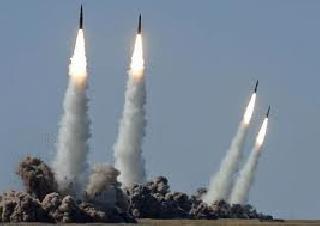
System CID-42, located about four billion light years away. A NASA photo
WASHINGTON (BNS): Astronomers have spotted a supermassive black hole which they believe is in the process of being ejected from its host galaxy at a very high speed.
Data from NASA's Chandra spacecraft suggest that the black hole collided and merged with another black hole and received a powerful recoil kick from gravitational wave radiation.
"It's hard to believe that a supermassive black hole weighing millions of times the mass of the sun could be moved at all, let alone kicked out of a galaxy at enormous speed," said Francesca Civano of the Harvard-Smithsonian Center for Astrophysics (CfA), who led the new study.
"But these new data support the idea that gravitational waves -- ripples in the fabric of space first predicted by Albert Einstein but never detected directly -- can exert an extremely powerful force."
Civano and her team had studied a system called CID-42, located in the middle of a galaxy about four billion light years away, and had spotted two distinct, compact sources of optical light in it.
Further data revealed that the two sources in CID-42 were moving apart at a speed of at least 3 million miles per hour.
Previous Chandra observations detected a bright X-ray source likely caused by super-heated material around one or more supermassive black holes. However, they could not distinguish whether the X-rays came from one or both of the optical sources because Chandra was not pointed directly at CID-42, giving an X-ray source that was less sharp than usual.
"The previous data told us that there was something special going on, but we couldn't tell if there were two black holes or just one," said co-author Martin Elvis of CfA. "We needed new X-ray data to separate the sources."
When Chandra's sharp High Resolution Camera was pointed directly at CID-42, the resulting data showed that X-rays were coming only from one of the sources.
The researchers believe that when two galaxies collided, the supermassive black holes in the centre of each galaxy also collided. The two black holes then merged to form a single black hole that recoiled from gravitational waves produced by the collision, which gave the newly merged black hole a sufficiently large kick for it to eventually escape from the galaxy.
The other optical source in CID-42 is believed to be the bright star cluster that was left behind.
The scientists also give two other possible explanations for what is happening in CID-42. One would involve an encounter between three supermassive black holes, resulting in the lightest one being ejected.
Another idea is that CID-42 contains two supermassive black holes spiraling toward one another, rather than one moving quickly away.
However, both alternate explanations would require at least one of the supermassive black holes to be very obscured, since only one bright X-ray source is observed.
Thus the Chandra data support the idea of a black hole recoiling because of gravitational waves.
The results will appear in the June 10 issue of The Astrophysical Journal.
 Previous Article
Previous Article













The Indian Air Force, in its flight trials evaluation report submitted before the Defence Ministry l..
view articleAn insight into the Medium Multi-Role Combat Aircraft competition...
view articleSky enthusiasts can now spot the International Space Station (ISS) commanded by Indian-American astr..
view article